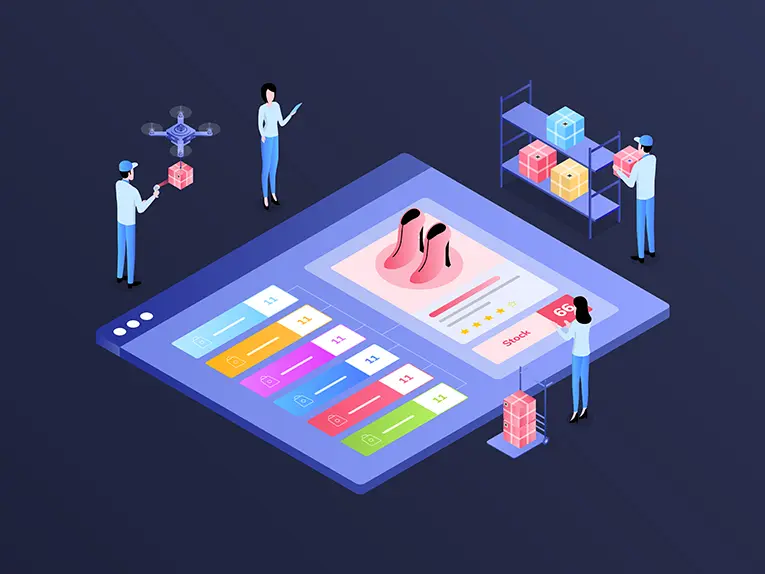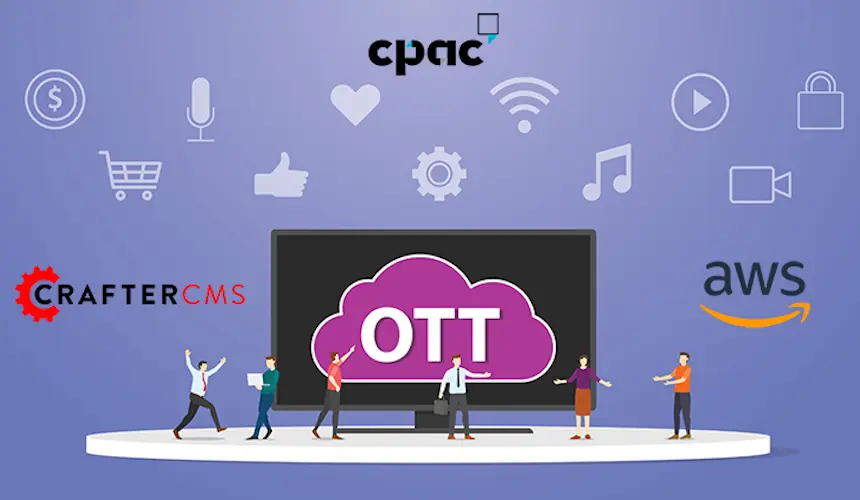Composable Commerce: Composing Content-Rich Experiences with a Headless CMS

Mike Vertal

The digital commerce experience no longer operates separately from the rest of the organization. As the customer journey has advanced, it now requires a business to provide seamless and consistent experiences across multiple channels. This means integrating content into their eCommerce platforms and ensuring that all of the different components of the tech stack can work together effectively.
Unfortunately, many businesses have found that their existing monolithic platforms can’t support them in these endeavors and have found a need to turn to new approaches that leverage cloud-native technologies and headless architecture. According to Gartner, “by 2023, 50% of new commerce capabilities will be incorporated as API-centric SaaS services.” In order to combine these capabilities, organizations will need to embrace composable commerce.
In this article, we’ll dive into the concept of composability, explain why composable commerce is taking center stage and show you how you can build e-commerce experiences with the help of a composable CMS like CrafterCMS.
Explaining the Rise of Composability
It wasn’t long ago that leading enterprises were able to accomplish everything they needed with the help of an all-in-one suite platform. After all, it usually contained a CMS, eCommerce platform, DAM solution, analytics, and a host of other additional tools right out of the box.
Today, businesses have realized that they need software that is more adaptable and less susceptible to quickly changing market conditions. However, with monolithic applications, there is much technical debt incurred, which prevents that swiftness.
Leading organizations need flexible platforms that enable fast speed to market, the ability to create a unified system that handles all aspects of the customer journey without the drawbacks, and allows them to build and maintain customer relationships while delivering an exceptional brand experience. Many of these organizations turn to headless architecture to support them, but headless is only the first step. Instead, they must embrace composability and all it offers.
Composability refers to designing a system that contains interrelated components. These components can be selected and assembled in different ways until they satisfy the organization’s unique needs. However, embracing composability doesn’t only mean putting the right technology pieces in place. As Gartner highlights, it also means to “fuse business and IT teams — so that they have shared accountability for business outcomes — by tying incentives and performance metrics to joint success criteria.” As a result, businesses will need to support all personnel with user-friendly tools and processes as they dive into approaches such as composable commerce.
What Is Composable Commerce?
Composable commerce refers to an eCommerce solution that is built using API-first, headless, and best-of-breed components. These components should be easily integrated and be able to meet an organization’s unique needs. Composable commerce follows the same principles as a composable DXP, but instead, the focus shifts to eCommerce experiences rather than other content-driven digital experiences such as personalized enterprise websites, employee intranets, OTT video experiences, customer/partner portals, and such.
However, to support the modern customer journey, any composable commerce ecosystem should include a headless CMS to manage content and digital experiences. With composable commerce, businesses no longer rely on a monolithic platform to handle all of their commerce needs. Instead, they opt for best-of-breed components to handle different aspects of the customer journey.
For example, an eCommerce platform can handle the primary commerce-related requirements such as a shopping cart, checkout, inventory management, and order processing. However, a headless CMS can take over the content management requirements, and when it includes an experience builder (like CrafterCMS’s Studio application), it can help orchestrate the user experience delivered to each channel. At the same time, other software applications handle customer identity management, search and merchandising, recommendations, checkout, and/or chatbots.
Composable commerce represents the evolution from headless commerce, which involves using headless architecture to separate the frontend and backend of the eCommerce platform in order to create shopping experiences on multiple channels on the frontend. Composable commerce involves all aspects of the eCommerce ecosystem and leverages APIs in the same way to connect the many different pieces and create one integrated system.
Benefits of Adopting Composable Commerce
Businesses that adopt composable commerce can achieve several of the benefits that come with it:
Custom eCommerce Experiences
With the ability to pick from any selection of vendors, organizations can assemble their custom eCommerce ecosystem made up of best-of-breed tools. As a result, they no longer have to be limited by sub-par tools that come with many suites and can tailor their ecosystem to fit internal needs and external customer requirements.
Increased Flexibility
Developers no longer have to be restricted by the level of customization and difficulty of integrating other tools into the eCommerce tech stack. The increased flexibility of composable commerce removes vendor lock-in challenges that come with many suite systems. It also enables developers to select the tools and technologies they want to build customer experiences on the frontend.
Better Adaptability
The entire notion of composability is to give organizations the increased adaptability they need to respond to changes in the marketplace, customer expectations and innovation. With composable commerce, that adaptability is a reality.
Faster Speed to Market
Businesses can achieve faster time to market with the freedom to customize the internal user experience and improve productivity.
Better Customer Experience
Content and shopping experiences can be easily created for multiple customer touchpoints, creating an omnichannel experience and also enabling businesses to provide the added personalization their customers desire.
How CrafterCMS Supports Composability
Adopting a composable approach and implementing composable commerce requires the right technological architecture as well as the capability to fuse IT and business teams together to achieve overall business success.
CrafterCMS is a headless platform that empowers everyone within the enterprise, from marketers and developers to IT operations. As a Git-based and API-first CMS, CrafterCMS provides developers with all the capabilities that their organizations need today. At the same time, content authors benefit from powerful and user-friendly tools they need to manage content and the overall customer experience.
Agile Backend
A MACH architecture that includes microservices helps businesses to meet composability requirements. With CrafterCMS, Crafter Studio (the content authoring platform) and Crafter Engine (the content delivery platform) are both API-first headless platforms that fit within an overall microservices architecture. This enables composability of both authoring experiences, as well as customer-facing digital experiences In addition, CrafterCMS includes a variety of reusable plugins in the CrafterCMS Marketplace for easy composability, and can easily integrate with any eCommerce backend service. For example, PIM, payment service, recommendation engine and more are usually integrated to build a complete eCommerce ecosystem. In addition, CrafterCMS's unique Git-based content repository enables incredible levels of productivity improvement through DevContentOps.
Frontend Flexibility
CrafterCMS’s flexibility allows it to work in an ecosystem where it can serve as the centralized content repository for all digital channels. Developers have the freedom to choose any framework(s) they wish to build the frontend user interface(s) – for example, React, Vue, Angular, HTML5 templating engine, native mobile apps, and more. For server-side rendering (especially important for SEO of eCommerce sites), developers have the option to use Groovy, Node.js, Nuxt.js, Next.js (and even Java if needed for performance) on the backend. All of this functionality enables CrafterCMS to support all types of composable commerce initiatives.
At the same time, Crafter Studio is the content authoring app that provides the content teams with powerful and easy-to-use tools, including drag and drop experience building and WYSIWYG editing tools, not to mention in-context previews for any channel. No matter how you want to design your composable commerce ecosystem, CrafterCMS can deliver what you need.
Want to learn more about how CrafterCMS powers modern digital commerce? Watch our recorded webcast: How Content Led E-Commerce Drives Customer Engagement.
Related Tags
Related Posts

Websites Are Dead?

Mike Vertal

No-Code Experience Building for Marketers & Designers

Amanda Lee

The Future of Web Experiences: From Browsing and Searching to Conversational AI

Mike Vertal

Is Your CMS MACH-Ready? A Practical Guide for Enterprise Architects

Sara Williams
Related Resources
-

CrafterCMS at eBay: The Universal Content Platform for eBay.com
Webcast
-

Personalized Digital Experiences for a Cruise Liner
Webcast
-

Introducing CrafterCMS v4.0
Webcast
-

Modernizing Video Delivery and Content Management at CPAC, A Canadian Nationwide Broadcaster
Webcast
-

Building React Apps on a Headless CMS
White Paper





